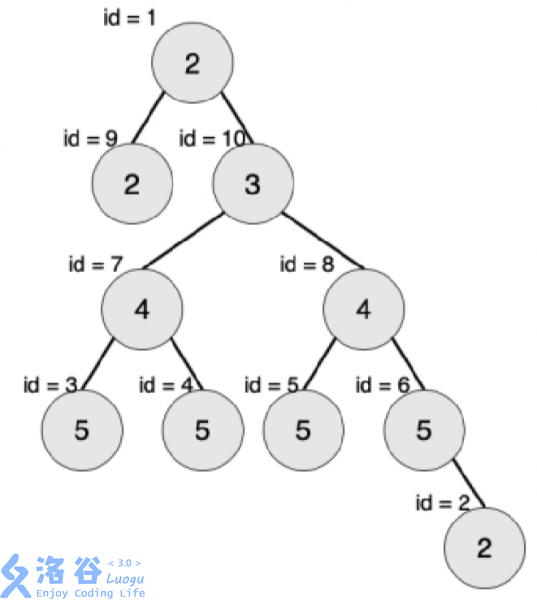
那么根据题意,上图不是对称二叉树,只有节点7的子树是;
通俗来说,对称二叉树就是已一个节点x为根的子树有穿过x点的对称轴并且对称轴两边的对称点的大小也必须相等,那么这棵树就是对称二叉树。
思路也很简单:递归处理每个节点的子树的节点数size,然后枚举每一个节点的子树来判断是否为对称二叉树。如果一边有节点另一边没有就return剪枝,一旦碰到不一样的节点就剪枝。
特别的,单个节点也是一个对称二叉树。
代码:
#include<iostream> #include<cstdio> #include<cstring> #include<algorithm> #define LL long long using namespace std; int read(){//快读 int k = 0, f = 1; char c = getchar(); while(c < '0' || c > '9'){ if(c == '-') f = -1; c = getchar(); } while(c >= '0' && c <= '9'){ k = k * 10 + c - 48; c = getchar(); } return k * f; } int val[1000010], size[1000010], ans; struct zzz { int l, r; }node[1000010]; int dfs(int pos) {// if(pos == -1) return 0; size[pos] = dfs(node[pos].l) + dfs(node[pos].r) + 1; return size[pos]; } bool duichen(int ls, int rs) {//判断对称 if(ls == rs && ls == -1) return 1; if(val[ls] == val[rs] && size[ls] == size[rs] && duichen(node[ls].l, node[rs].r) && duichen(node[ls].r, node[rs].l)) return 1; return 0; } int main(){ int n = read(); for(int i = 1; i <= n; ++i) val[i]=read(); for(int i = 1; i <= n; ++i) node[i].l = read(), node[i].r = read(); dfs(1); for(int i = 1; i <= n; ++i) if(duichen(node[i].l, node[i].r)) ans = max(ans, size[i]); printf("%d ", ans); return 0; }
完结